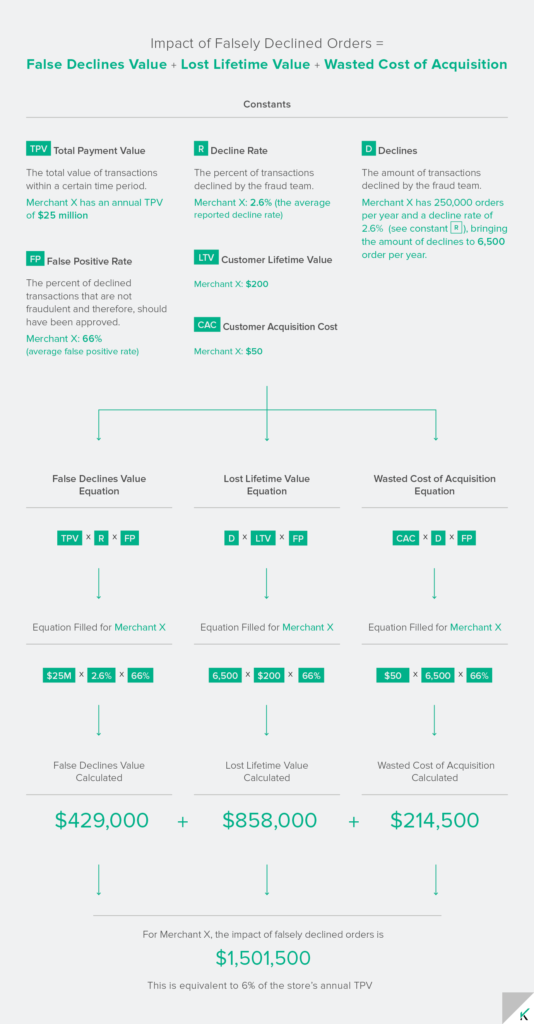Why CFOs Should Care About Fraud Prevention

Most CFOs don’t spend time thinking about fraud management – and that might be a mistake. The steps taken by your eCommerce operation to manage fraud directly impact your bottom line. An approach steered by fear of fraud will hurt business’ cash flow through lower approval rates – and on the flip side, an operation that lacks a deep understanding of the way fraudsters operate will likely get hit with unexpected chargebacks.
But the cost of fraud goes well beyond these two scenarios. Fear of fraud regularly prevents eCommerce merchants from expanding into new markets and profiting from lucrative international segments. Moreover, the operational cost of maintaining a team of manual fraud reviewers can be substantial.
Beyond cash-flow issues, CFOs should also be aware of fraud impacting reporting accuracy. For example, calculations of marketing ROI that don’t take fraud into account will be inaccurate, since they count orders which are later chargebacked.
In this blog post I’ll explain why business fraud is a profit protection issue that CFOs can’t afford to overlook.
Fraud & Profit Protection
No CFO would sink 2% of their company’s annual revenue into fees for an ineffective consultant. Yet many businesses lose far more basis points than this because of poor fraud management.
Measuring false declines
The problem of false declines is particularly likely to go unchecked, because it’s invisible: an issue of lost potential, rather than negative cash flows. But just because these losses doesn’t show up on the balance sheet doesn’t mean they’re any less real. Riskified research has found that around 70% of orders declined at checkout are actually legitimate – so merchants are leaving a staggering amount of revenue on the table. In fact, Riskified’s machine learning algorithms are often able to boost merchant approval rates in high-risk verticals like fashion and travel by 5%-10% – which typically translates to a proportional increase in revenue. The table below gives a more precise breakdown into the costs of making an incorrect decision on an order.

Tapping into new markets
Aside from false declines, sub-par fraud management often holds back expansion into new markets. Companies who are uncomfortable with this cross-border selling are at a huge competitive disadvantage: by 2022, 20% of all online spending will be cross-border. Moreover, cross-border orders are particularly valuable: for American merchants, fashion orders from the Middle East are worth 65% more than domestic ones, and smoking paraphernalia orders from Latin America are worth double.
As mentioned above, dealing efficiently with fraud can help CFOs slash operational costs. Switching to an automated review system means freeing up payroll devoted to analyst teams – Riskified worked with one leading ground-transportation merchant, who, after integration, were able to move the majority of their analysts into other positions that needed to be filled. Moreover, reducing false declines will lighten your customer service needs, since there will be fewer upset customers calling in wondering why they were turned down. Another merchant we work with told us that they were able to cut hiring costs by 10%, because of increased operational efficiency from automating fraud review.
More accurate reporting
Nearly all financial planning decisions depend on accurate reporting. But many reports, from cash-flow forecasts to gross margin estimates, tend to overlook the fraud factor – rendering them imprecise at best.
Take digital marketing ROI calculations for example. If a paid social media campaign costs $50 per conversion, and the average value of a conversion is an $80 cart, this campaign sounds pretty worthwhile. But what if 1% of these orders end up as chargebacks in the following months – and these are the highest value conversions? When it comes to digital marketing in particular it’s important to know about how fraud risk varies by referral site – for instance Riskified research found that inbounds from twitter are far safer than those from Facebook and Instagram. You can read more about fraud and traffic source here.
Another noteworthy example of fraud skewing reporting is returns abuse. This is when customers serially overbuy, knowing they will return most of the goods later. In the worst cases, these abusers effectively use retail stores as rentals. Though this isn’t hard fraud – most merchants are hesitant to block serial returners – this abuse can have a real impact on operational costs. And CFOs need to be aware that unusual return volume can skew sales and inventory reports.
Conclusion
Though it’s often not part of the job description, fraud, and the many shapes it takes, is an issue CFOs can’t afford to overlook. To learn more about how senior management should look at fraud, download a free copy of our guide.


